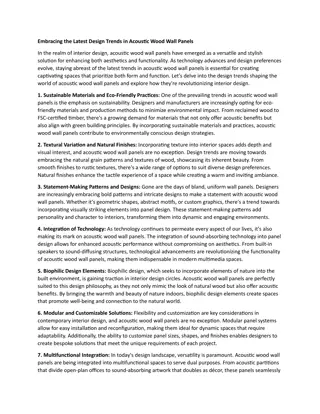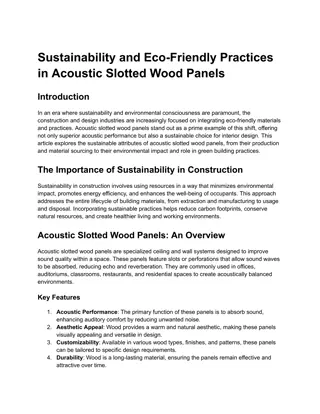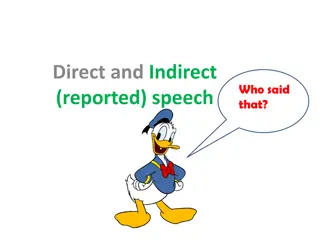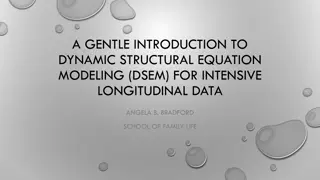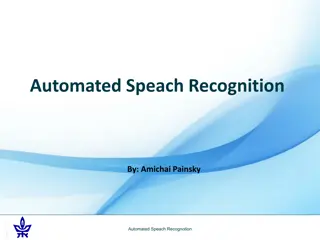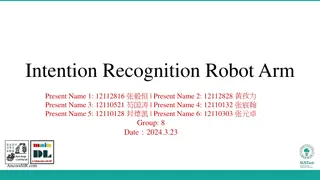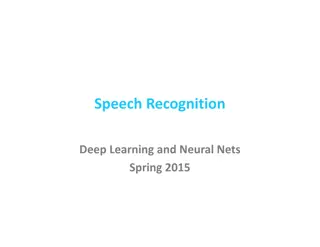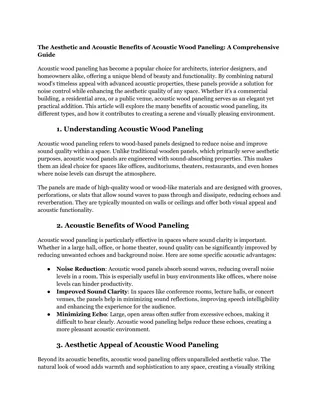Speech Recognition and Acoustic Modeling
This presentation delves into the world of speech recognition, covering topics such as Hidden Markov Models, feature extraction, acoustic modeling, and more. Explore the essential elements of processing speech signals, linguistic decoding, constructing language models, and training acoustic models. Gain insights into Gaussian Mixture Models, the application of Hidden Markov Models, and the use of the Forward algorithm. Discover the fascinating process of mapping speech to word sequences and the intricate workings of recognition algorithms in this informative session.
Download Presentation

Please find below an Image/Link to download the presentation.
The content on the website is provided AS IS for your information and personal use only. It may not be sold, licensed, or shared on other websites without obtaining consent from the author.If you encounter any issues during the download, it is possible that the publisher has removed the file from their server.
You are allowed to download the files provided on this website for personal or commercial use, subject to the condition that they are used lawfully. All files are the property of their respective owners.
The content on the website is provided AS IS for your information and personal use only. It may not be sold, licensed, or shared on other websites without obtaining consent from the author.
E N D
Presentation Transcript
Outline 2 1. Recap 2. Apply HMM to Acoustic Modeling 3. Acoustic Training 4. Homework
Recap 3
4 Last time Feature Vectors Output Sentence Input Speech Linguistic Decoding and Search Algorithm Front-end Signal Processing Language Model Constructi on Acoustic Model Training Acoustic Models Language Model Text Corpora Lexicon Speech Corpora Today
Feature Extraction 5 Feature Extraction
How to do recognition? 6 How to map speech O to a word sequence W ? P(O|W): acoustic model P(W): language model
Hidden Markov Model Simplified HMM RGBGGBBGRRR
Hidden Markov Model Elements of an HMM {S,A,B, } S is a set of N states A is the N N matrix of state transition probabilities B is a set of N probability functions, each describing the observation probability with respect to a state is the vector of initial state probabilities 0.6 s1 {R:.3,G:.2,B:.5} 0.3 0.3 0.3 0.1 0.2 s3 s2 0.7 0.5 0.2 {R:.3,G:.6,B:.1} {R:.7,G:.1,B:.2}
Gaussian Mixture Model (GMM) Observation may be continuous. (e.g., mfcc) Use GMM to model continuous prob. density function.
Acoustic Model P(O|) 11 Model of a phone ( ) Markov Model (2.1, 4.1-4.5) Gaussian Mixture Model (2.2)
Acoustic Model P(O|) 12 Forward algorithm (4.0 - basic problem 1) t(i) = P(o1o2 ot, qt= i| ) = P(observing o1o2 ot, state i at time t| ) 1(i) = ibi(o1) , 1 i N t+1(j) = [ ?=1 ? ??? aij] bj(ot+1) ? P(O| ) = ?=1 ??(?)
Acoustic Model P(O|) 13 t+1(j) j t+1( j) = [ t(i) aij] bj(ot+1) i 1 j N 1 t T 1 t(i) t+1 t Forward Algorithm
Acoustic Model State Seq. 14 Viterbi algorithm (4.0 - basic problem 2) Goal: find the optimal state sequences ? = ?1?2 ?? P(O| ) can also be computed based on ?.
Acoustic Model Training 15 Baum-Welch algorithm (4.0 - basic problem 3) Goal: Adjust parameters (?,?,?) to maximize P(O| )
Acoustic Model Training s 3 s 3 s 3 s 3 s 3 s 3 s 3 s 3 s 3 s 3 State s 2 s 1 s 2 s 1 s 2 s 1 s 2 s 1 s 2 s 1 s 2 s 1 s 2 s 1 s 2 s 1 s 2 s 1 s 2 s 1 1 2 3 4 5 6 7 8 9 10 O 4 5 O 1 0 O 1 O 2 O 3 O O 6 O 7 O 8 O 9 v1 v2 b1(v1)=3/4, b1(v2)=1/4 b2(v1)=1/3, b2(v2)=2/3 b3(v1)=2/3, b3(v2)=1/3
Acoustic Model Training 17 Initialization Bad initialization leads to local minimum with higher probability. Model Model Initialization: Segmental K-means Re-estimation: Baum-Welch
Acoustic Model P(O|W) 19 How to compute P(O|W) ?
Monophone vs. triphone Monophone Consider only one phone information per model Triphone Consider both left and right neighboring phones (60)3 216,000
Triphone a phone model taking into consideration both left and right neighboring phones (60)3 216,000 Sharing at Model Level Sharing at State Level Shared Distribution Model (SDM) Generalized Triphone
Training Tri-phone Models with Decision Trees An Example: ( _ ) b ( +_ ) 12 yes no sil-b+u 30 a-b+u o-b+u y-b+u Y-b+u 32 46 42 Example Questions: 12: Is left context a vowel? 24: Is left context a back-vowel? 30: Is left context a low-vowel? 32: Is left context a rounded-vowel? i-b+u 24 U-b+u u-b+u e-b+u r-b+u 50 N-b+u M-b+u E-b+u
Acoustic Model Training 23 03.mono.train.sh 05.tree.build.sh 06.tri.train.sh
Training steps Get features(previous section) Train monophone model Use previous model to build decision tree (for triphone). Train triphone model
Training steps Get features (last time) Train monophone model a. gmm-init-mono b. compile-train-graphs c. align-equal-compiled (gmm-align-compiled instead when looping) d. gmm-acc-stats-ali e. gmm-est f. numgauss = numgauss + incgauss g. Goto step c. Train several times Use previous model to build decision tree(for triphone). Train triphone model Initialize monophone model Get train graph model -> decode & align EM training: E step EM training: M step
Training steps Get features (last time) Train monophone model Use previous model to build decision tree(for triphone). Train triphone model a. gmm-init-model Initialize GMM ( from decision tree) b. gmm-mixup Gaussian merging (increase #gaussian) c. convert-ali Convert alignments(model <-> decisoin tree) d. compile-train-graphs get train graph e. gmm-align-compiled model -> decode&align f. gmm-acc-stats-ali EM training: E step g. gmm-est EM training: M step h. numgauss = numgauss + incgauss i. Goto step e. train several times
How to get Kaldi usage? source setup.sh align-equal-compiled --help
align-equal-compiled Write an equally spaced alignment (for getting training started) Usage: align-equal-compiled <graphs-rspecifier> <features- rspecifier> <alignments-wspecifier> e.g.: align-equal-compiled 1.mdl 1.fsts scp:train.scp ark:equal.ali gmm-align-compiled $scale_opts --beam=$beam --retry- beam=$[$beam*4] <hmm-model*> ark:$dir/train.graph ark,s,cs:$feat ark:<alignment*> For first iteration(in monophone) beamwidth = 6, others = 10; Only realign at $realign_iters="1 2 3 4 5 6 7 8 9 10 12 14 16 18 20 23 26 29 32 35 38 $realign_iters= 10 20 30
gmm-acc-stats-ali Accumulate stats for GMM training.(E step) Usage: gmm-acc-stats-ali [options] <model-in> <feature- rspecifier> <alignments-rspecifier> <stats-out> e.g.: gmm-acc-stats-ali 1.mdl scp:train.scp ark:1.ali 1.acc gmm-acc-stats-ali --binary=false <hmm-model*> ark,s,cs:$feat ark,s,cs:<alignment*> <stats>
gmm-est Do Maximum Likelihood re-estimation of GMM-based acoustic model Usage: gmm-est [options] <model-in> <stats-in> <model- out> e.g.: gmm-est 1.mdl 1.acc 2.mdl gmm-est --binary=false --write-occs=<*.occs> --mix- up=$numgauss <hmm-model-in> <stats> <hmm-model- out> --write-occs : File to write pdf occupation counts to. $numgauss increases every time.
Homework 03.mono.train.sh 05.tree.build.sh 06.tri.train.sh
TODO Step1. Execute the following commands. script/03.mono.train.sh | tee log/03.mono.train.log script/05.tree.build.sh | tee log/05.tree.build.log script/06.tri.train.sh | tee log/06.tri.train.log Step2. finish code in TODO script/03.mono.train.sh script/06.tri.train.sh Step3. Observe the output and results. Step4. (opt.) tune #gaussian and #iteration.
Hint (extremely important!!) 03.mono.train.sh Use the variables already defined. Use these formula: Pipe for error compute-mfcc-feats 2> $log
Questions? Email: : r07922022@ntu.edu.tw















